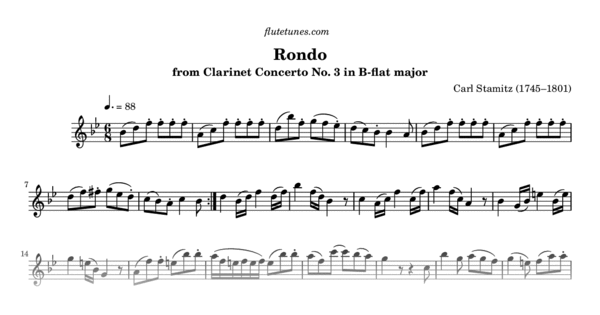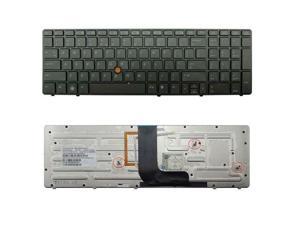Stamitz Flute Concerto G Major Pdf
Aug 9, 2009 - Sheet music for Andante non troppo moderato from Flute Concerto in G by Carl Stamitz, arranged for Flute and Piano. Free printable PDF score. From Flute Concerto in G. Opus number, Op. Composer, Carl Stamitz (1745–1801). Instrumentation, Flute and Piano. Key, C major. Range, D4–G6. A pioneer in the development of the symphony, Johann Stamitz also composed several concertos, including fourteen for flute. Haydn's String Quartets Opus Click to learn more. Flute Concerto in D Major.
Review Guidelines. Explain exactly why you liked or disliked the product. Do you like the artist? Is the transcription accurate?
Is it a good teaching tool?. Consider writing about your experience and musical tastes. Are you a beginner who started playing last month?
Do you usually like this style of music?. Feel free to recommend similar pieces if you liked this piece, or alternatives if you didn't. Be respectful of artists, readers, and your fellow reviewers. Please do not use inappropriate language, including profanity, vulgarity, or obscenity.

Stamitz Flute Concerto G Major Pdf Download
Avoid disclosing contact information (email addresses, phone numbers, etc.), or including URLs, time-sensitive material or alternative ordering information. We cannot post your review if it violates these guidelines. If you have any suggestions or comments on the guidelines, please email us. All submitted reviews become the licensed property of Sheet Music Plus and are subject to all laws pertaining thereto. If you believe that any review contained on our site infringes upon your copyright, please email us. Read Sheet Music Plus's complete.
Carl Philipp Stamitz (1745 – 1801), who changed his given name from Karl, was a German composer of partial Czech ancestry. He was the most prominent representative of the second generation of the Mannheim School. He was the eldest son of Johann Stamitz, a violinist and composer of the pre-classical area.
Born in Mannheim, he received lessons from his father and Christian Cannabich, his father's successor as leader of the Mannheim orchestra. As a youth, Stamitz was employed as a violinist in the court orchestra at Mannheim. In 1770, he began travelling as a virtuoso, accepting short-term engagements, but never managing to gain a permanent position. He visited a number of European cities, living for a time in Strasbourg and London. In 1794, he gave up travelling and moved with his family to Jena in central Germany, but his circumstances deteriorated and he descended into debt and poverty, dying in 1801.
Papers on alchemy were found after his death. Stamitz wrote symphonies, symphonies concertantes, and concertos for clarinet, cello, flute, bassoon, basset horn, violin, viola, viola d’amore and different combinations of some of these instruments.
Some of his clarinet and viola concertos are particularly admired. He also wrote duos, trios and quartets. Two operas, Der verliebte Vormund and Dardanus, are now lost. Stylistically, his music resembles that of Mozart or Haydn and is characterized by appealing melodies, although his writing for the solo instruments is not excessively virtuosic. The opening movements of his orchestral works, which are in sonata form, are generally followed by expressive and lyrical middle movements and final movements in the form of a rondo.
Stylistically, Stamitz's music is not too far removed from the works of the young Mozart, or those of Haydn's middle period. Stamitz's works are characterized by regular periods and appealing melodies, with the voices quite often led in thirds, sixths and tenths. The writing for the solo instruments is idiomatic and virtuosic, but not excessively so. Although originally created for Strings, I created this arrangement for Woodwind Quartet (Flute, Bb Clarinet, French Horn & Bassoon).
Carl Philipp Stamitz (1745–1801), who changed his given name from Karl, was a German composer of partial Czech ancestry. He was the most prominent representative of the second generation of the Mannheim School. He was the eldest son of Johann Stamitz, a violinist and composer of the pre-classical area. Born in Mannheim, he received lessons from his father and Christian Cannabich, his father's successor as leader of the Mannheim orchestra. As a youth, Stamitz was employed as a violinist in the court orchestra at Mannheim. In 1770, he began travelling as a virtuoso, accepting short-term engagements, but never managing to gain a permanent position.

He visited a number of European cities, living for a time in Strasbourg and London. In 1794, he gave up travelling and moved with his family to Jena in central Germany, but his circumstances deteriorated and he descended into debt and poverty, dying in 1801. Papers on alchemy were found after his death.
Stamitz wrote symphonies, symphonies concertantes, and concertos for clarinet, cello, flute, bassoon, basset horn, violin, viola, viola d’amore and different combinations of some of these instruments. Some of his clarinet and viola concertos are particularly admired. He also wrote duos, trios and quartets. Two operas, Der verliebte Vormund and Dardanus, are now lost. Stylistically, his music resembles that of Mozart or Haydn and is characterized by appealing melodies, although his writing for the solo instruments is not excessively virtuosic.
The opening movements of his orchestral works, which are in sonata form, are generally followed by expressive and lyrical middle movements and final movements in the form of a rondo. Stylistically, Stamitz's music is not too far removed from the works of the young Mozart, or those of Haydn's middle period. Stamitz's works are characterized by regular periods and appealing melodies, with the voices quite often led in thirds, sixths and tenths. The writing for the solo instruments is idiomatic and virtuosic, but not excessively so.
Although originally created for 2 Violins & Piano, I created this arrangement for Violin, Viola & Concert (Pedal) Harp. Carl Philipp Stamitz (1745 – 1801), who changed his given name from Karl, was a German composer of partial Czech ancestry. He was the most prominent representative of the second generation of the Mannheim School.
He was the eldest son of Johann Stamitz, a violinist and composer of the pre-classical area. Born in Mannheim, he received lessons from his father and Christian Cannabich, his father's successor as leader of the Mannheim orchestra. As a youth, Stamitz was employed as a violinist in the court orchestra at Mannheim.

In 1770, he began travelling as a virtuoso, accepting short-term engagements, but never managing to gain a permanent position. He visited a number of European cities, living for a time in Strasbourg and London.
In 1794, he gave up travelling and moved with his family to Jena in central Germany, but his circumstances deteriorated and he descended into debt and poverty, dying in 1801. Papers on alchemy were found after his death. Stamitz wrote symphonies, symphonies concertantes, and concertos for clarinet, cello, flute, bassoon, basset horn, violin, viola, viola d’amore and different combinations of some of these instruments. Some of his clarinet and viola concertos are particularly admired. He also wrote duos, trios and quartets. Two operas, Der verliebte Vormund and Dardanus, are now lost.
Stylistically, his music resembles that of Mozart or Haydn and is characterized by appealing melodies, although his writing for the solo instruments is not excessively virtuosic. The opening movements of his orchestral works, which are in sonata form, are generally followed by expressive and lyrical middle movements and final movements in the form of a rondo. Stylistically, Stamitz's music is not too far removed from the works of the young Mozart, or those of Haydn's middle period. Stamitz's works are characterized by regular periods and appealing melodies, with the voices quite often led in thirds, sixths and tenths. The writing for the solo instruments is idiomatic and virtuosic, but not excessively so. Although originally created for Accompanied Strings, I created this arrangement for Flutes (2) & Concert (Pedal) Harp. This piece is best played using the 'GeneralUser GS.sf2' Soundfont by S.
Christian Collins Software (http://www.schristiancollins.com/generaluser.php).
